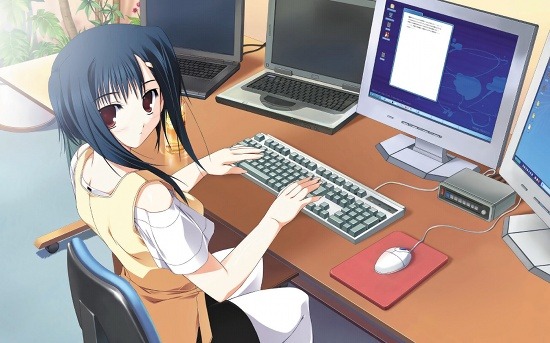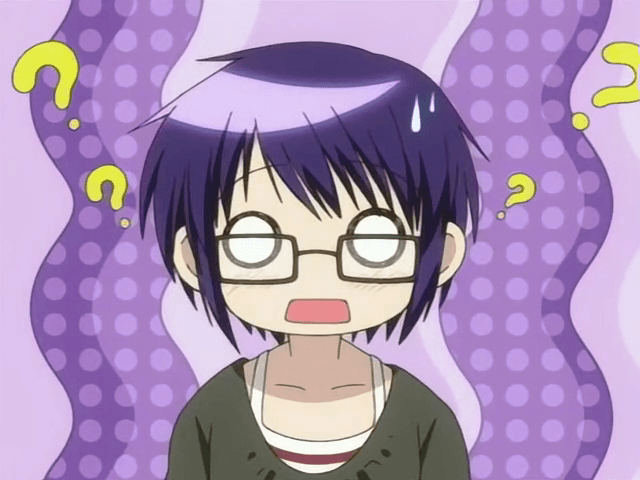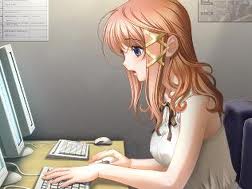How to Get Copyright Permission for Sword Art Online

Okay with that out of the way.
Generally, copyright ownership belongs to the writer of a piece of work unless it is transferred by contract to another person or organization. The main copyright legislation is the Copyright Human action of 1976. Information technology protects literary, musical, dramatic, choreographic, pictorial, sculptural, and architecture works. Information technology too protects motion pictures and sound recordings (17 U.s.C Section 102[a]). It doesn't mention anything near electronic resource. Still, a clause in Section 102 is used to protect these works. According to the Act, equally soon as an idea is in fixed class ( in other words, created) it is copyrighted past the writer. They don't take to do anything to go a copyright. The creator may utilise a copyright notice (© Apathetic blah someone) without needing to contact the US Copyright Office (Rubin, 2010 p. 334).
Copyright Owners have certain Exclusive Rights (17 U.s.a.C. Department 106):
- Reproduce the copyrighted work.
- Ready derivative works based on the copyrighted piece of work.
- Distribute copies to the public by auction or other transfer of ownership, rental, charter, or lending.
- Perform publicly.
- Brandish publicly.
Unremarkably, you lot retain the copyright from the date the work is created up to 70 years subsequently yous die.
So what does all this mean?
That means all the images, videos, and other works from anime we use are copyrighted regardless of where we observe them online. Don't panic yet! You are non liable quite yet for using these copyrighted materials. It also means you own the copyright to your weblog's content…although not all of it! Hang on, I will explain in a fleck.
Off-white Utilise

- The purpose and character of the employ, including whether such use is for commercial or for nonprofit educational purposes.
- The nature of the copyrighted work.
- The amount and substantiality of the portion used in relation to the copyrighted work as a whole.
- The effect of the utilize upon the potential marketplace for, or value of, the copyrighted work.
Commercial utilize of the piece of work may be permissible if the work is satire, a review of the material, advisory, or a critique depending on the above criteria. Criteria #3 basically means the copyrighted work cannot make up a large portion of the content.
And so what does all this mean?
Information technology means using clips of anime and images from manga/anime is generally immune if your blog is nonprofit (like most of our customs) and for review, satirical, educational, or a critique. Yeah, you don't take to worry equally much almost the Feds knocking down your door.
Hold on though! This also means we have to be cautious about posting fan art and other works. While the characters may be copyrighted past a visitor, the artwork derived from them belong to the author. Unless information technology falls nether the Fair Use criteria, a lawsuit is possible. I make information technology a point non to mail artwork that isn't released as a Creative Eatables or open copyright wallpaper for this reason.
So, you do non own the copyright to the images you lot use in your posts unless yous create them yourself. But, information technology is okay to apply them under fair use. The text you write belongs to you.
Speaking of Creative Commons, here is a brief explanation of the options available.
- Attribution: Others can re-create, distribute, brandish, and perform the copyrighted work and derivative works based upon it- but just if they give credit every bit stipulated past the author.
- Share Alike: Others can distribute derivative works only under a license identical to the license that governs the creator'south work every bit long as they creator is credited.
- Noncommercial: Others can copy, distribute, display, and perform the original work – and derivative works based upon it- but for noncommercial purposes simply. The creator must exist credited.
- No Derivative Works: Others can re-create, distribute, display, and perform only verbatim copies of the original work, not derivative works based upon it. The creator must be credited.
Putting it all Together.

It is best to attribute images to the copyright holders. Although, you will notice here on JP, we don't attribute images very often. It is poor exercise, that much I acknowledge. Information technology is often difficult to find the original creator of an image with the way images are shared online. This doesn't mean that we shouldn't make the effort if the prototype is an original artistic work. Images that belong to companies are easier to attribute.
Information technology is good practice to cite your sources and link to them in a reference section at the end of the blog post. Of course, non all opinion posts like reviews need references. Here at JP, we tend to simply link to our sources in the text or do formal APA way citations when needed. These are useful for those few who want to read more on their ain.

Now this article simply deals with United States Copyright Law. Other countries accept their own laws. Many are fairly similar to what I discuss here.
Hopefully this demystifies some of the confusion surrounding copyrights. I tried to cutting out all the complexities and go down to the basic of the police. For about of us, we are protected by off-white utilise and write nearly anime/manga because we enjoy them. For those few of the states who want to earn a "happy buck," copyright becomes a piffling more tangled.
I recommend you expect at the copyright laws of your land if you lot want to commercialize your web log and be sure to attribute all images and references.
References
Rubin, R. (2010). Foundations of Library and Information science. New York: Neal-Schuman Publishers.
US Copyright Role (2011). United states of america Copyright Law. Retrieved from http://www.copyright.gov/title17/
Creative Eatables (n.d.). Virtually the Licenses. Retrieved from http://creativecommons.org/licenses/
Source: https://www.japanpowered.com/japan-culture/anime-blogging-and-copyright-considerations
0 Response to "How to Get Copyright Permission for Sword Art Online"
Post a Comment